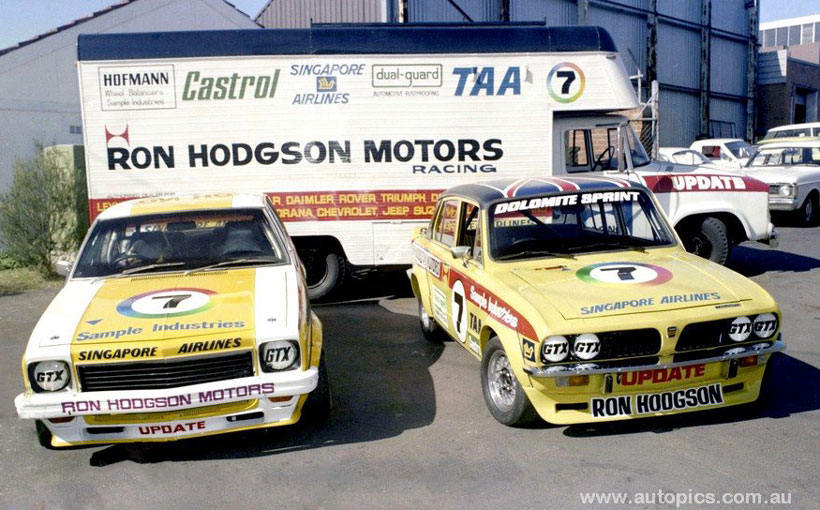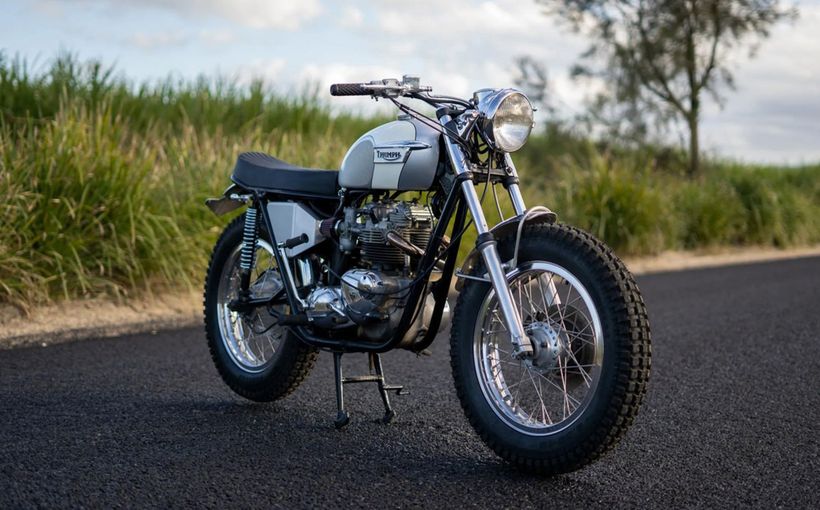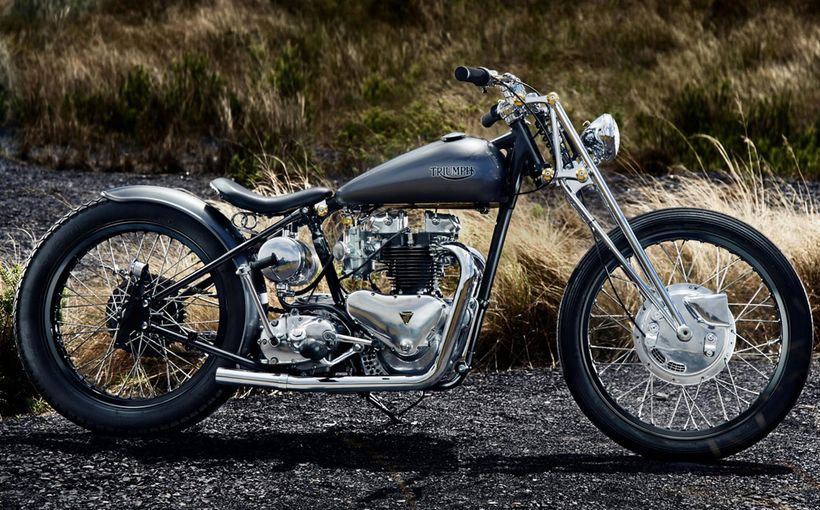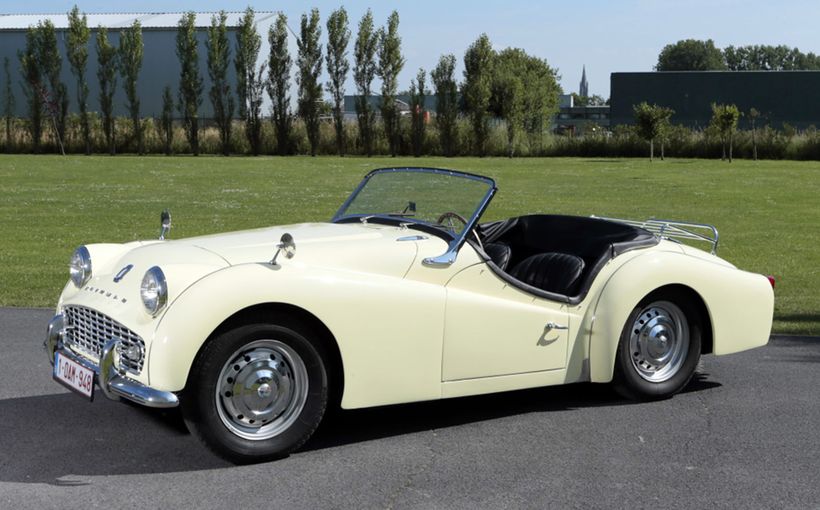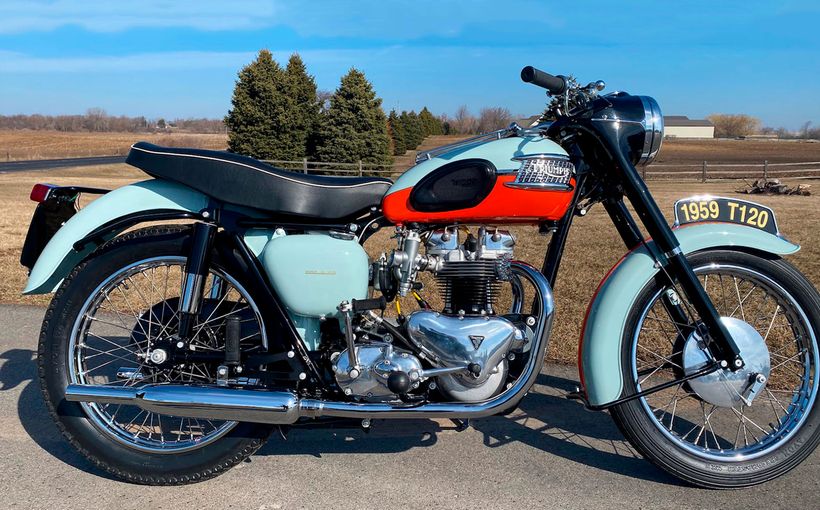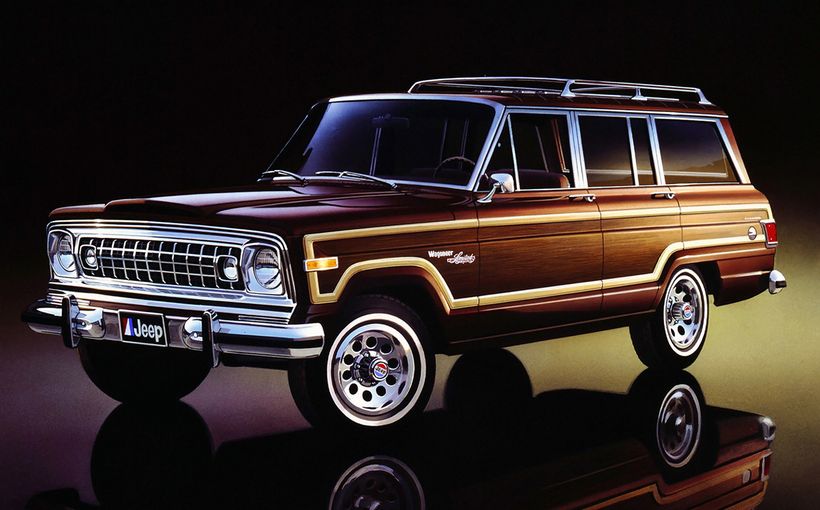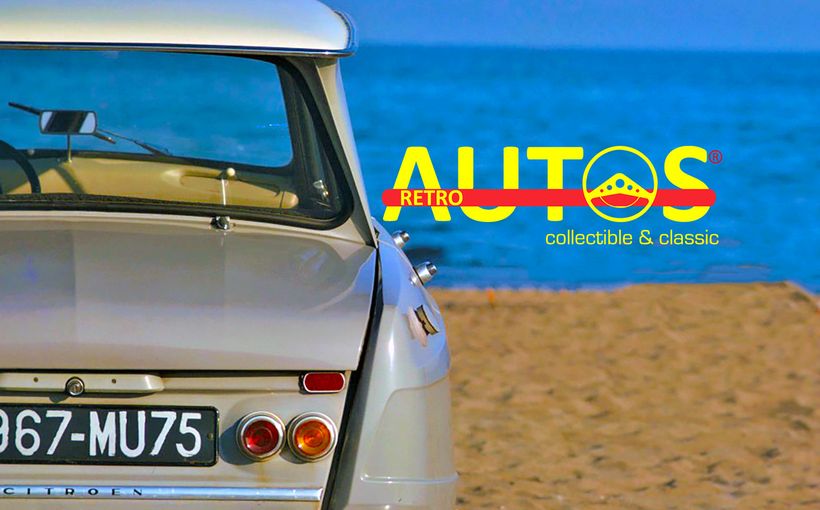Triumph Dolomite Sprint: The Torana L34-inspired ‘Super Sprint’ that never made it

What might have been. Ron Hodgson was a prominent Sydney Holden dealer who backed Bob Morris in various Toranas throughout the 1970s, including the L34 (left) that won the 1976 Bathurst 1000. Hodgson also sold other brands including Leyland, which was the catalyst for his team’s ‘Super’ Dolomite Sprint seen here. It’s surprising how similar in size the 2.0 litre Dolomite looks with its big spoilers and flares compared to the L34, even though the 5.0 litre V8 Torana was a larger car in all key dimensions. And haven't race car transporters of top touring car teams come a long way, too!
If Ron Hodgson Racing and Leyland Australia had their way in 1976, a unique competition version of the Triumph Dolomite Sprint would have been built right here in Australia. Designed along similar lines to the team’s (Group C) Holden Torana L34, it would have been arguably the fastest, toughest and rarest of its type in the world.
Although Hodgson’s bold proposal was thoroughly documented and backed by Leyland Australia, it was rejected by the sport’s governing body CAMS (Confederation of Australian Motor Sport). That failure was a bitter pill to swallow for Hodgson, his star driver Bob Morris and the team’s chief mechanic Ron Missen, after their first season with the British sedan in 1975 showed where improvements were needed.
“Ron Hodgson was a Leyland dealer and he was also a genuine motor sport enthusiast who would race anything he thought could win and improve sales in the showroom,” Bob Morris told Shannons Club.
“It was our idea to make the car more competitive. We’d found out what it needed by then; bigger wheels, bigger brakes, better aero and more power. It really wasn’t a radical idea, but it probably looked that way on the prototype we built, with the big spoilers and wheel arch flares similar to the L34.

Hodgson’s ‘Super Sprint’ proposal would have produced a seriously quick 2.0 litre contender. The large fiberglass spoilers and wheel arch flares made by GS Motor Bodies included a neat door shut-line through the rear flares. The prototype's taller 14-inch diameter ‘display’ wheels and tyres (8.0-inch wide racing versions would have been fatter than these) made the standard 13s look too small for this car.
“The concept was to run a 2.0 litre touring car with those upgrades, but we had to build a minimum number of them (for legal road use) to meet CAMS’ homologation rules. To us it was just the same as Holden had done with the L34, which was a limited-build competition version of the base car, the LH SL/R 5000.”
The seed for the ‘Super Sprint’ concept was planted by Aussie international racer Frank Gardner when he co-drove the team’s Torana L34 with Morris to second place at Bathurst in 1975.
Gardner pointed out where improvements could be made to the Triumph’s aerodynamics, with a large front spoiler to reduce drag and lift and integral air intakes to better cool the front brakes.
He also suggested a boot-mounted spoiler to improve traction and high speed stability and wheel arch flares to house taller and wider wheels and tyres.
The front end was to get beefier stub axles and hubs from the larger Triumph 2.5 PI sedan, with spacers in the rear hubs to match the wider front track for more sure-footed handling.

Big duck tail rear spoiler was inspired by the Torana L34 and would have added considerable downforce and improved grip at high speeds. It looked good too and doubled as an extra billboard for a sponsor’s message.
Upgrading the standard 13 x 5.5-inch wheels to 14 x 8.0-inch would have put a lot more rubber on the road and provided a greater choice of racing tyres. The bigger wheels would also provide the extra room required to fit larger ventilated front disc brakes and powerful Girling four-spot calipers.
A special four-branch inlet manifold was also proposed, locally developed by Peter Warnerford to allow use of twin side-draught 45mm DCOE Weber carburettors for greater engine power. These upgrades would have resulted in an extremely fast 2.0 litre contender.
According to Ron Missen, the stumbling block in negotiations with CAMS was the minimum number of cars required to be built by Leyland Australia to satisfy homologation requirements.
“They (Leyland) had 600 or so in the country and were prepared to build 300 of them to the specs we were proposing, but because we were modifying them here CAMS demanded that a minimum of 500 cars be built,” he told Shannons Club. “Leyland couldn’t do that many, so that was the end of it.”
Toyota Australia PR manager Mike Breen, who worked at Leyland Australia in the 1970s, told Shannons Club the Dolomite's volume shortfalls at the time were caused by local ADR27A vehicle emissions laws.
"When the (Super Sprint) program began the plan was to continue importing the car for the foreseeable future. Unfortunately ADR27A intervened. It was the first of the emission regulations and it became effective from July 1976," Breen explained.
"All the cars we sold post that date had been imported between January and June 1976 and all the compliance plates were dated June 1976. Unfortunately, British Leyland in the UK decided that for the low volume we sold in Australia, it wasn't worth doing the engineering work required to allow the car to meet 27A, which was an emissions rule unique to Australia. So no more cars were exported here and the Super Sprint program died.
"CAMS actually did everything they could to help us race the Sprint. The first race cars we brought into Australia for Ron Hodgson and James Laing-Peach were built by Broadspeed (UK). They were somewhat outside the spirit of the rules but CAMS accepted them on the basis we would commit to replacing them after 12 months with Australian-built cars (under Missen).
"I sourced them from our company fleet. One belonged to Russell Turnham who was then marketing manager for Jaguar/Rover/Triumph/Mini and Moke. I was his assistant at the time."

The heart of the matter. At a time when the Dolomite was restricted to using a pair of single-choke carburettors, Hodgson’s Super Sprint was to use a locally-developed four-branch inlet manifold armed with two 45mm twin-choke Webers. These big breathing Italian side-draughts were eventually approved for use on the Group C Dolomites in 1977 with a larger 48mm choke size.
Developing the Dolomite Sprint
Although launched in the UK in June 1973, the Sprint – hottest model in the Dolomite range - did not start competing in British racing and rallying until 1974. In Australia it did not go on sale and hit the tracks until 1975.
Ron Hodgson’s race team remained at the forefront of local development until 1977. During this time Ron Missen made several trips to the UK, meeting with top touring car team Broadspeed and British Leyland Special Tuning to allow all parties to keep up to date with the latest developments on both sides of the globe.
Although the fully imported British sedan was considered relatively heavy for local 2.0 litre touring car racing at around 1025 kgs, its double-wishbone front suspension and four-link coil-sprung live rear axle proved responsive to handling upgrades. Its on-track behaviour wasn’t to every driver’s liking though.
The 1998cc ‘slant’ four cylinder engine featuring Triumph’s big breathing 16-valve SOHC aluminium cylinder head was a willing performer. In standard twin-carb Sprint form it had 127 bhp at 5700 rpm, was capable of sub-17 sec standing quarters and a top speed of 115 mph (190 km/h).

This engine was mated to a four-speed manual gearbox with Laycock de Normanville overdrive on third and fourth gears. In effect, it was a six-speed gearbox that proved to be an advantage on the race track for top drivers like Bob Morris who could fully exploit it.
Although equipped with front disc brakes, the Sprint’s standard 13-inch diameter wheels kept the lid on a rotor size which racers claimed was too small for the job. And the standard wheel housings did not allow enough room to fit the widest 8.5-inch rims and tyres permitted for 2.0 litre cars under the Group C rules (hence the local ‘Super Sprint’ concept).
Even so, the compact Triumph sedan proved competitive in the UK with Andy Rouse winning the 1975 British Saloon Car Championship driver’s crown in a car prepared under Ralph Broad (Broadspeed). Rouse’s team-mate Tony Dron came close to claiming another Broadspeed title in 1977.
The BSCC regulations were similar to Australia’s Group C rules at the time, so Hodgson purchased the championship-winning car from Broadspeed and had it shipped to Australia. However, the Aussies were underwhelmed.

The Hodgson Racing Team cars were always well presented, as seen here during practice for the 1975 Hardie-Ferodo 1000 at Bathurst. Laing-Peach and Moore finished a fighting third in Class B (1301-2000cc) behind class-winning Alfa 2000 GTV and runner-up Escort RS2000 rivals, having battled with brake trouble and a non-functioning overdrive in the later stages. Note the use of standard road wheels and high profile UK Dunlop race tyres, which were used on this ex-Broadspeed Group 1 car in the BSCC.
“When we got the first car it was as slow as a wet week,” Morris recalled. “They told us not to touch a thing, just go out and race it, but it was battling to do 1 min 03 sec laps at Amaroo Park which was a long way from where it needed to be.
“When we found out how slow it was, we basically had to start again and worked through it from front to back - engine, suspension, brakes, the lot. When we’d finished I think we held the Amaroo lap record at a low 57 secs, which gives you some idea of how much we improved them. It got to a stage where Ron was giving the UK guys tips on how to improve their cars, rather than them telling us what we should do.”
Local development under Ron Missen gradually honed the British sedans into fast and durable performers. The engine’s original 127 bhp at 5700 rpm was by late 1977 (with twin 48mm Webers) pumping out around 220 bhp at the flywheel with a sky-high rev tolerance of 8500 rpm.

ATCC and Bathurst 1000 champ Bob Morris was one of the fastest drivers of the Group C era and for several seasons shared track time between Ron Hodgson’s Torana V8s and Dolomite Sprints. Morris was blindingly quick in the Triumph sedans and often downed more powerful 3.0 litre competitors. Here he’s sweeping through Dunlop Loop at Sydney’s tight and twisty Amaroo Park – one of his favourite hunting grounds.
“The Dolomite engine was unique and if you didn’t get everything right it could be a bit of a hand grenade,” Missen recalled. “We went our own way with a lot of things. For example, we used Kawasaki valve springs, which was why we could spin them to 8500 rpm because those springs were much better than the standard ones they had to run in the UK.
“We also found that the crankshafts were too small, so they used to flex and vibrate at high revs. That would crack a main bearing which would lead to a broken crank if you didn’t shut it down in time.
“We weren’t allowed to run steel cranks so what we did (which also helped Broadspeed) was develop a really big harmonic balancer, which was originally off a BMW inline six. That smoothed out the crankshaft harmonics like you wouldn’t believe.
“I also made up a 10mm thick aluminium plate that sat between the sump and the cylinder block and was bolted to all the main bearing caps, so it was like a girdle that braced the whole bottom end. Once we’d done that and fitted the big balancer, the bottom end was pretty strong.
“They also had a problem with head gaskets, because of the aluminium head on a cast-iron block with different heat expansion rates and what have you, but we eventually solved that by using O rings. There were all sorts of things we did to make them more powerful and reliable.”

Bob Morris and John Fitzpatrick won the 1976 Hardie-Ferodo 1000 in a Torana L34, delivering Ron Hodgson his first Bathurst win. Their team-mates in the 2.0 litre division didn’t fare so well, even though the British cars were class competitive. The Dolomite Sprint shared by Ron Dickson and Kiwi open wheeler ace Graeme Lawrence crashed out of the race on lap 103 of 163. This shot really highlights how undersized the 13-inch diameter wheels looked on these cars.
Racing the Group C Dolomite Sprint
Ron Hodgson Racing was able to squeeze some remarkable performance out of the Dolomite Sprint, particularly when the team’s ATCC and Bathurst champion Bob Morris was at the controls.
On numerous occasions he cleaned up not only his prime 2.0 litre competition but also the Capri V6 and Mazda RX 3 top guns in the 3.0 litre class. No doubt CAMS officials would have been relieved that the Hodgson’s ‘Super Sprint’ proposal did not get up, if these giant-killing performances were anything to go by.
In 1976 and 1977, Morris and the Dolomite Sprint proved to be a very quick combination in the annual Sun 7-Rothmans 3.0 litre touring car series held at Amaroo Park, despite being handicapped by tyres considered to be too narrow for the weight of the car. They had a tendency to degrade quickly over longer race distances.
A good example of Morris’s blistering speed was showcased in the final round of the 1977 series where he took pole position at 58.1 secs. A quick time for sure - but still 0.8 sec outside the lap record he set at the previous Amaroo round! Barry Seton in his 3.0 litre V6 Capri was the only other driver to match Morris’ time in qualifying, before the Triumph driver saw off a number of challengers to win the race comfortably.

A strong Dolomite Sprint rival to the Hodgson team at Bathurst in 1976 was the ex-Broadspeed car shared by Paul Gulson and James Laing-Peach. It ran strongly until lap 82 when forced into retirement due to a sudden loss of engine oil pressure. Gulson revealed that an engine strip-down revealed some “foreign matter” in the sump which could have caused the problem.
Morris also showed astonishing pace at Oran Park in November 1976 when he romped away from a premium field of 3.0 litre contenders to win the 45-lap Bridgestone Marathon Cup outright and smash the 2.0 litre lap record in the process.
According to Auto Action’s race report, co-owner and entrant of Seton’s Capri, Bridgestone’s Barry Benson, lodged a protest against the Dolomite’s eligibility. However, as scrutineers were preparing to pull down the engine Morris was smiling confidently, stating that “they won’t find anything wrong with it.”
Not surprisingly, it was these stunning performances that kept the Hodgson cars under the microscope of CAMS scrutineers. Morris, however, said the Sprint required a particular driving technique to get the most out of it, which perhaps other drivers did not duplicate.
“A lot of drivers, both in Australia and overseas, just couldn’t come to grips with it,” he recalled. “I was brought up on small, underpowered cars like Corollas and to get the best out of a Corolla that only had 50 hp or whatever you couldn’t waste a drop of engine power, so it was all about maintaining momentum.

The John Dellaca/Terry Wade Dolomite Sprint wrote an infamous page in Bathurst 1000 history, after it tail-rammed the stationary Jack Brabham/Stirling Moss Torana L34 which was stuck in gear on the starting grid for the 1976 race. Note the crash damage on the front of the car, after hasty repairs to get it back into the race. It was classified a non-finisher, though, after completing insufficient laps.
“The Dolomite was one of those little cars that seemed to be relatively heavy, so you had to get off the brakes and onto the power very quickly before the apex of a corner to avoid losing momentum. As long as you kept the engine buzzing and kept working through the gears it was pretty good.
“Even though it didn’t have heaps of power, with the overdrive on third and fourth it was like having a six-speed ‘box. You’d be in third, flick the button on the gear-knob and it would go into third overdrive. Same with fourth. The overdrive engagement was instant, so I used to flat-change it. I’d just hold the (accelerator) pedal flat to the floor and flick the button. I don’t know if that was the proper English way of doing it, but it was very effective.
“It had pretty good gearing and the brakes weren’t too bad. We got the thing to handle pretty well too and I loved driving it. At some places, like going down through The Esses at Sandown from the end of the back straight to Dandenong Rd corner, there was nothing quicker than the Dolomite.”
Interestingly, Bob Morris’s 1976 Bathurst-winning co-driver, the experienced Englishman John Fitzpatrick, was one of many drivers that disliked the Sprint that he briefly raced in the UK. He has been quoted as calling it a “lame duck”, a car cursed with awful brakes that was horrible to drive. Perhaps ‘Fitz’ should have tried the Aussie cars…

In 1977 the Leyland-backed Hodgson team cars were given a visual freshen-up with a very patriotic (for Britain that is) red/white/blue livery that mirrored that of the UK works cars. They also raced under the new ‘Ron Hodgson Team Leyland’ banner which showed Leyland’s increasing commitment to the Dolomite program. Bob Morris beat a quality field to win the final round of the 3.0 litre touring car series at Amaroo Park that year.
Death by homologation
The Dolomite Sprint was never far from controversy during the volatile three-year period it was raced by Ron Hodgson’s team with Leyland Australia backing.
The Sydney team’s relationship with CAMS was strained after the governing body rejected its Super Sprint proposal in 1976. However, things reached a new low in the lead-up to the 1977 Hardie-Ferodo 1000 at Bathurst due to a dispute over the legality of pistons fitted to the team’s cars.
According to a report in Racing Car News at the time, the Dolomite driven by Bob Morris was still under a cloud before Bathurst following a tear-down by scrutineers after its outright victory in the final round of the 3.0 litre touring car series at Amaroo Park in August.
All was well with the car except its pistons, which had been modified with two fly-cuts (as opposed to the previous four) to provide sufficient clearance for the high-lift camshaft the car was running. Because the new UK-homologated pistons had not been submitted for CAMS approval and Leyland Australia had no such pistons available for comparison, it had been difficult for CAMS to obtain proof of their legality.

One of the two Dolomite Sprints scheduled to compete under the Ron Hodgson Team Leyland banner at Bathurst in 1977 was to be driven by David Seldon and Graeme Lawrence, seen here in action at Sydney’s Oran Park. Another freshly-built car (the best of the lot according to Missen) was to have been shared by BSCC champion Andy Rouse and Aussie international Tim Schenken, but those plans came to zero in the lead-up to the race.
The ruling was that until this was obtained, the new fly-cut pistons could not be used. Hence the leading Dolomites and CAMS were set on a collision course at Mount Panorama, as described in Auto Action’s coverage of the 2.0 litre class that year:
“There were no Dolomite finishers – in fact only one started after a series of practice and pre-race dramas. The problems centered around pistons and the depth of fly-cuts (grooves to allow clearance for high-lift cams and deep-reach valves).
“All the Hodgson motors and those used by Ralph Radburn had deep fly-cut pistons and James Laing-Peach, the Sydney Telegraph motoring writer/racer, was the only man in the country using the alleged correct ‘legal’ pistons.
“Many drivers spoke to officials about the Dolomites (apparently using deep fly-cuts in pistons) practising. The word around the pits was that the Hodgson team had decided to run the car and fight the arguments later, as they believed they had paperwork to justify the special modifications.”

The Dolomite Sprint shared by Terry Wade and Bathurst veteran Brian Reed at the 1980 Hardie-Ferodo 1000 gives some insight into how the Hodgson team’s proposed ‘Super Sprint’ could have looked. Under the revised Group C rules for 1980 there were still no big front and rear spoilers but wheel arch flares and fatter rubber were evident, although still restricted to 13-inch diameter. Wade/Reed finished fifth in Class B behind faster Toyota Celica, Escort RS2000 and Alfa 2000 competition.
This was followed by an emotional statement from Ron Hodgson on live TV just before the start of Sunday’s big race. In an interview with commentator Evan Green, Hodgson said that he was withdrawing from racing his two Dolomite Sprints following the exclusion of the two cars by the scrutineers.
Clearly, Hodgson and Leyland Australia had run out of tolerance. In the October 13, 1977 issue of Auto Action, the first issue published after the race, a page two story titled “Hodgson’s Dolomites Pull Out” confirmed that it was the end of the road for the works-backed program.
“On the Thursday after the Bathurst race, it was announced that the Triumph Dolomite Sprints, entered by Ron Hodgson Team Leyland and supported by Leyland Australia, would withdraw from competition in Australia,” the article stated.
“Managing director of Leyland Australia, Mr Frank Andrew, said that the company had taken the decision to cease participation with the Sprints after advice from the manager of Ron Hodgson Team Leyland, Ron Hodgson and Tony Cumming, Leyland’s general marketing manager.
“Mr Andrew said it was felt that certain inconsistencies in decisions by CAMS were detrimental to the proper continuance of the racing programme. A six-figure sum has been invested in the Dolomite effort, reflecting both Leyland’s and Hodgson’s desire to present the team in a thoroughly professional manner.
“It was jointly decided that inconsistent decisions by CAMS in respect of the cars’ compliance meant an enforced end to further competition.”

The Dolomite’s final appearance in the Hardie-Ferodo 1000 was in 1981, when privateers Martin Power and Brian Winsall were declared non-finishers due to completing insufficient laps. Sad that a factory-backed touring car program that started with such a bang, would end with barely a whimper.
Although the Sprint had been withdrawn from Australian showrooms by mid-1976, privately entered Dolomites continued to compete into the early 1980s driven by Gerald Kay, Terry Wade, Martin Power and others. The British marque made its final Bathurst appearance in 1981.
Given the considerable resources that Ron Hodgson Racing and Leyland were prepared to commit to the Dolomite Sprint in its early years in Australia, its low key demise after seven years of Group C touring car racing seemed inappropriate. It will always be remembered as potential unfulfilled.

